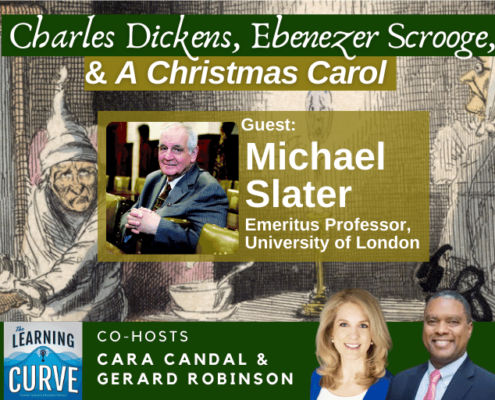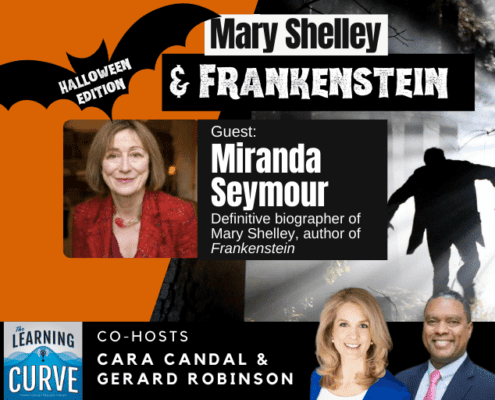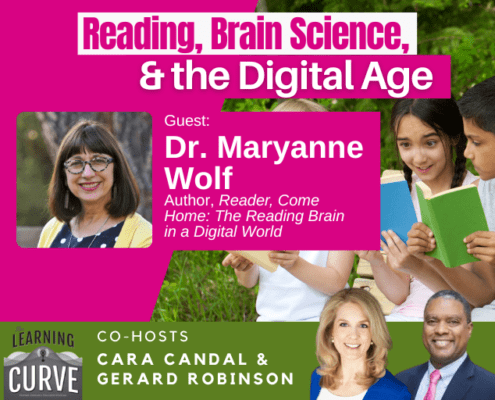“Every Child is an Artist…” – 15 Resources for K-12 Art Education
Snap the Whip, Winslow Homer, 1872
“Every child is an artist…” – Pablo Picasso
In Pioneer’s ongoing series of blogs here, here, here, and here on curricular resources for parents, families, and teachers during COVID-19, this one focuses on: Introducing K-12 schoolchildren to great works of art.
“I saw the angel in the marble and carved until I set him free,” wrote Michelangelo Buonarroti, the High Renaissance sculptor, painter, architect, and poet. The fact that great paintings and the fine arts are too often hidden in K-12 American education is a major reason we’re offering a variety of Ancient, Medieval, Renaissance, Neoclassical, and Modern Art resources to help parents, teachers, and schoolchildren, including:
1 ) The Art Lesson, Tomie dePaola (ages pre-school to 7)
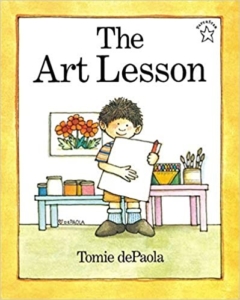 “Tomie dePaola is the author and illustrator of many beloved books for children, including the Caldecott Honor Book Strega Nona. Fans of all ages will be pleased to hear that The Art Lesson is, in fact, based on the artist’s own experiences growing up, and offers a welcome glimpse into his past. This bright picture book is as covered with drawings as the walls of Tommy’s parents’ and grandparents’ houses, and sends an inspirational message to budding artists and individualists. Break out the crayons!”
“Tomie dePaola is the author and illustrator of many beloved books for children, including the Caldecott Honor Book Strega Nona. Fans of all ages will be pleased to hear that The Art Lesson is, in fact, based on the artist’s own experiences growing up, and offers a welcome glimpse into his past. This bright picture book is as covered with drawings as the walls of Tommy’s parents’ and grandparents’ houses, and sends an inspirational message to budding artists and individualists. Break out the crayons!”
2 ) Discovering Great Artists: Hands-On Art Experiences in the Styles of Great Masters, by MaryAnn Kohl (ages pre-school to 8)
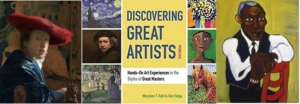 “This book is exactly what it says it is; hands on activities related to a great artist for children. I’m a Trivium Classical Education/Charlotte Mason Classical Education hybrid homeschooler. I bought this book to include hands on ideas as we study the Early Modern Era (1600-1850) using Story of the World as our history spine.”
“This book is exactly what it says it is; hands on activities related to a great artist for children. I’m a Trivium Classical Education/Charlotte Mason Classical Education hybrid homeschooler. I bought this book to include hands on ideas as we study the Early Modern Era (1600-1850) using Story of the World as our history spine.”
3 ) Look! Seeing the Light in Art, by Gillian Wolfe (ages 5-10)
 This exciting addition to a highly acclaimed series of art titles focuses on how artists use light in their paintings. Showcasing some of the most famous and best-loved artists of all time, the book shows how their paintings use dramatic light, mysterious light, cold light, hot light, dappled light, rainy light, and other forms of light. Gillian Wolfe’s interactive technique encourages readers to engage with the works and to think about how they would employ these methods to recreate the same effect themselves. Conveying a substantial amount of information in an accessible and entertaining format, Look! Seeing the Light in Art lets readers of all ages think about what makes great paintings so successful and innovative, while offering them another point of entry to a wide range of famous works of art.”
This exciting addition to a highly acclaimed series of art titles focuses on how artists use light in their paintings. Showcasing some of the most famous and best-loved artists of all time, the book shows how their paintings use dramatic light, mysterious light, cold light, hot light, dappled light, rainy light, and other forms of light. Gillian Wolfe’s interactive technique encourages readers to engage with the works and to think about how they would employ these methods to recreate the same effect themselves. Conveying a substantial amount of information in an accessible and entertaining format, Look! Seeing the Light in Art lets readers of all ages think about what makes great paintings so successful and innovative, while offering them another point of entry to a wide range of famous works of art.”
4 ) A Child’s Introduction to Art: The World’s Greatest Paintings and Sculptures, by Heather Alexander (ages pre-school to 8)
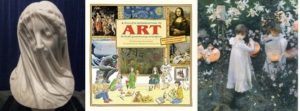 “In the tradition of Black Dog’s best-selling Child’s Introduction books, which include The Story of the Orchestra and A Child’s Introduction to the Night Sky, A Child’s Introduction to Art introduces kids ages 9 through 12 to the art world’s most famous painters, styles, and periods, all brought to life through full-color photographs of 40 masterpieces, as well as charming original illustrations.”
“In the tradition of Black Dog’s best-selling Child’s Introduction books, which include The Story of the Orchestra and A Child’s Introduction to the Night Sky, A Child’s Introduction to Art introduces kids ages 9 through 12 to the art world’s most famous painters, styles, and periods, all brought to life through full-color photographs of 40 masterpieces, as well as charming original illustrations.”
5 ) The Arts: A Visual Encyclopedia, by DK (ages 8-12)
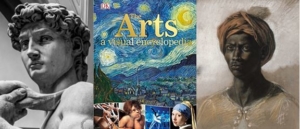 “The entire history of the greatest works in painting, sculpture, and photography are included on this comprehensive and colorful tour through time. From the first strokes of paint on prehistoric caves to contemporary street art in the 21st century, every artistic style and movement is explored and explained in stunning detail.”
“The entire history of the greatest works in painting, sculpture, and photography are included on this comprehensive and colorful tour through time. From the first strokes of paint on prehistoric caves to contemporary street art in the 21st century, every artistic style and movement is explored and explained in stunning detail.”
6 ) Leonardo da Vinci (Getting to Know the World’s Greatest Artists), by Mike Venezia (ages 8-10)
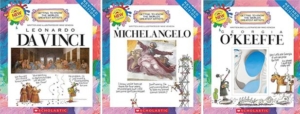 “Getting to Know the World’s Greatest Artists series combines a delightful mix of full-color historical reproductions, photos, and hilarious cartoon-style illustrations that bring to life the works of renowned artists, combining poignant anecdotes with important factual information for readers (Ages 8-10). Clever illustrations and story lines, together with full-color reproductions of actual paintings, give children a light yet realistic overview of Leonardo DaVinci’s life and style.”
“Getting to Know the World’s Greatest Artists series combines a delightful mix of full-color historical reproductions, photos, and hilarious cartoon-style illustrations that bring to life the works of renowned artists, combining poignant anecdotes with important factual information for readers (Ages 8-10). Clever illustrations and story lines, together with full-color reproductions of actual paintings, give children a light yet realistic overview of Leonardo DaVinci’s life and style.”
7 ) Artist in Overalls: The Life of Grant Wood, by John Duggleby (ages 4-8)
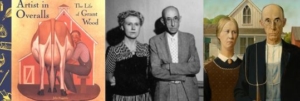 “The renowned painting American Gothic is famous around the world, but what do we know about the artist? This lively biography follows Grant Wood as he develops from a shy farm boy into a celebrated artist. This is the first published biography of this American artist specifically geared to young readers. It is complete with an instructional afterword to help young artists learn to draw and a listing of museums where Grant Wood’s work can be seen.”
“The renowned painting American Gothic is famous around the world, but what do we know about the artist? This lively biography follows Grant Wood as he develops from a shy farm boy into a celebrated artist. This is the first published biography of this American artist specifically geared to young readers. It is complete with an instructional afterword to help young artists learn to draw and a listing of museums where Grant Wood’s work can be seen.”
8 ) Who Was Pablo Picasso? (Who Was Series), (ages 6 to 10)
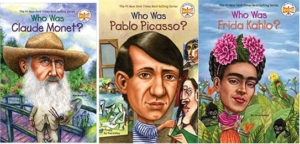 “Over a long, turbulent life, Picasso continually discovered new ways of seeing the world and translating it into art. A restless genius, he went through a blue period, a rose period, and a Cubist phase. He made collages, sculptures out of everyday objects, and beautiful ceramic plates. True Kelley’s engaging biography is a wonderful introduction to modern art.”
“Over a long, turbulent life, Picasso continually discovered new ways of seeing the world and translating it into art. A restless genius, he went through a blue period, a rose period, and a Cubist phase. He made collages, sculptures out of everyday objects, and beautiful ceramic plates. True Kelley’s engaging biography is a wonderful introduction to modern art.”
9 ) Japanese Origami for Beginners Kit: 20 Classic Origami Models: Kit with 96-page Origami Book, 72 High-Quality Origami Papers and Instructional DVD, by Vanda Battaglia (ages 8 and up)
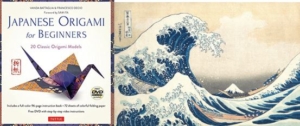 “The ancient art of origami originated in Japan, where it is steeped in traditional values. The 20 models presented in this kit include many with strong symbolic meanings, such as the carp, the frog and the crane, which symbolize longevity, good luck and perseverance.”
“The ancient art of origami originated in Japan, where it is steeped in traditional values. The 20 models presented in this kit include many with strong symbolic meanings, such as the carp, the frog and the crane, which symbolize longevity, good luck and perseverance.”
10 ) Sister Wendy: The Complete Collection, by BBC (ages middle school to adult)
 “Far from being a stuffy academy-driven art history course, Sister Wendy has the uncanny ability to invite even the most unschooled viewer to a very deep art appreciation that will almost certainly drive a lifetime of new perspectives and a love of art. This is the perfect series to introduce children or adolescents to the joys of art, as well as tutoring them on how to develop a deeper perception that may well translate to their life in general.”
“Far from being a stuffy academy-driven art history course, Sister Wendy has the uncanny ability to invite even the most unschooled viewer to a very deep art appreciation that will almost certainly drive a lifetime of new perspectives and a love of art. This is the perfect series to introduce children or adolescents to the joys of art, as well as tutoring them on how to develop a deeper perception that may well translate to their life in general.”
11 ) Arts and Ideas, by William Fleming (ages high school to adults)
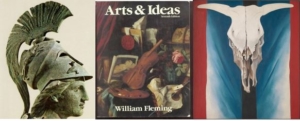 “Intended for courses in Western Humanities, this best-selling text chronologically explores the major styles as they appear in painting, sculpture, architecture, literature, music, and philosophy from antiquity to present. Using lively anecdotes, Fleming shows how the styles are linked together by common purposes, themes, and ideas.”
“Intended for courses in Western Humanities, this best-selling text chronologically explores the major styles as they appear in painting, sculpture, architecture, literature, music, and philosophy from antiquity to present. Using lively anecdotes, Fleming shows how the styles are linked together by common purposes, themes, and ideas.”
12 ) Thomas Hart Benton, by PBS/Ken Burns (ages high school to adults)
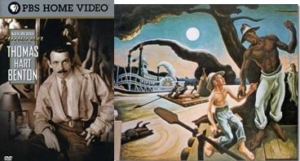 “One of America’s best-known, least-understood painters was Thomas Hart Benton. Ken Burns traces the pioneering artist’s turbulent career in this bittersweet portrait, highlighting the fierce controversy over his work. The film combines rare archival material, commentary by those close to the artist, and a stunning selection of Benton’s superb paintings and murals to create a moving profile of the 20th-century genius.”
“One of America’s best-known, least-understood painters was Thomas Hart Benton. Ken Burns traces the pioneering artist’s turbulent career in this bittersweet portrait, highlighting the fierce controversy over his work. The film combines rare archival material, commentary by those close to the artist, and a stunning selection of Benton’s superb paintings and murals to create a moving profile of the 20th-century genius.”
13 ) History of Beauty and On Ugliness, by Umberto Eco (ages high school to adults)
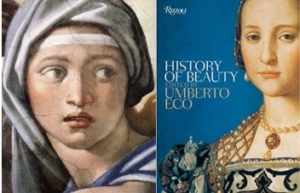 Umberto Eco’s groundbreaking and much-acclaimed first illustrated book has been a critical success since its first publication in 2004. What is beauty? Umberto Eco, among Italy’s finest and most important contemporary thinkers, explores the nature, the meaning, and the very history of the idea of beauty in Western culture.”
Umberto Eco’s groundbreaking and much-acclaimed first illustrated book has been a critical success since its first publication in 2004. What is beauty? Umberto Eco, among Italy’s finest and most important contemporary thinkers, explores the nature, the meaning, and the very history of the idea of beauty in Western culture.”
14 ) Alexander Calder: Performing Sculpture, by Achim Borchardt-Hume (ages high school to adults)
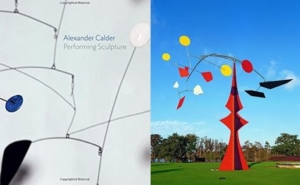 “Alexander Calder (1898-1976) is one of modernism’s most captivating and influential figures. First trained as a mechanical engineer, Calder relocated from New York to Paris in the mid-twenties where his acceptance into the city’s burgeoning avant-garde circles coincided with the development of his characteristic form of kinetic sculpture.”
“Alexander Calder (1898-1976) is one of modernism’s most captivating and influential figures. First trained as a mechanical engineer, Calder relocated from New York to Paris in the mid-twenties where his acceptance into the city’s burgeoning avant-garde circles coincided with the development of his characteristic form of kinetic sculpture.”
15 ) Video: Why Beauty Matters?, by Roger Scruton (ages high school to adults)

Watch Here: Why Beauty Matters?
Get Updates on Our Education Research
Related Content:




